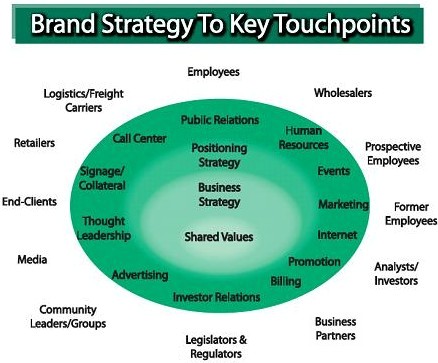So often these days, more and more companies are attempting to become "marketing focused/led" rather than sales or financially driven.
Most organizations, large and small, are taking their cues from benchmark companies such as Starbucks, Harley Davidson, Southwest Airlines and FedEx in the attempt to replicate the tried-and-true business model that all marketers and companies so adamantly covet.
However, most company executives often underestimate what it truly takes to implement such a dramatic shift of a company's overall strategy. The successful implementation and execution of such a strategy hinges on whether it becomes an essential part of a company's DNA from top to bottom, inside and out—including long-term resource commitment (financial and personnel).
So what does it mean to be marketing-led, and do most companies understand the consequences of implementing this dramatic shift in strategy and culture?
Let's start with a basic understanding of "marketing-led." Marketing-led companies focus on the key initiatives that will sustain growth in the new, buyer-driven environment, whereas a sales-driven approach is what is often referred to as the "bag 'em and tag 'em" approach.
A bona fide, world-class marketing-led organization has a clear long-term focus on core items such as retention, customer satisfaction, customer experience management, and lifetime value of a customer. Conversely, a sales- or financially driven organization is primarily focused on acquisition, revenue, market share, and price/costs.
Two obvious hurdles that many companies experience during the shift to a marketing-led approach are cultural and financial. As a result, what they sometimes end up with is a hybrid approach that is part marketing-led, part sales-led and part financially driven. This can (and usually does) cause confusion not only internally but also among customers and channel partners.

That hybrid phase is a make-or-break scenario that has the potential to frustrate everyone in the organization due to conflicting messages, goals, and priorities. The consequence of such frustration can lead to back-peddling and ultimately failure.
For a company to succeed in this dramatic transformation, there are several things that must be considered, changed, and improved. The first (and arguably the most difficult and important) is culture.
Dramatic internal cultural shifts can wreak havoc on an organization. Shifting to a marketing-led organization means that everyone—not only marketing—is to become the "voice of the customer." That means every employee is now working with the company's and the customers' best interests in mind. Unfortunately, this usually proves difficult for some employees accustomed to the "old culture"; therefore, some employee churn will naturally occur.
Nonetheless, continuous training programs, new mission statements and strategy, new faces, and a new philosophy are only a part of the equation. To achieve success, there has to be long-term commitment from the top down, and it must be lived and breathed by all involved.
This takes us to the second part of the equation: a shift to a marketing-led organization goes beyond internal branding. There must be commitment to investing in the company and its infrastructure in an effort to better serve its customers—create a world-class customer experience and reputation.
This doesn't necessarily mean that an organization has to commit several hundred thousand or millions of dollars in brand-awareness activities (though it shouldn't be ruled out). After all, organizations such as the Mayo Clinic and Starbucks were able to build world-class brands with very little advertising investment (primarily through word of mouth).

Source: Lincoln Financial Group, 2006
However, it does mean that the company may have to invest (over time) in the way that it conducts business in order to help ensure that it is easy to do business with, that it is more nimble and can be more in tune with its customers.
One option is to conduct a key touchpoint analysis (or experience mapping) in an effort to find and fix the touchpoints that create frustration and confusion and diminish customer satisfaction.
If there is no additional funding for things such as upgraded systems (e.g., a state-of-the-art phone system or CRM software—or both) that will help to increase speed-to-market and customer satisfaction, then confusion and frustration set in, and the process will regress and ultimately fail over time. Once again, the key to success is commitment and consistency over the long haul.
Another imbalance in the equation is the misalignment of annual/quarterly cross-functional goals and bonus programs. Cross-functional annual goals must be aligned. If the IT group, finance, sales, and marketing all have different goals, then there is a high potential for conflicting priorities.
For example, if marketing has specific new product launch goals but each new product launch requires system changes but IT has other priorities/goals that constrain it from allocating resources to the new product launch, the result will likely be fewer new product launches, fewer satisfied customers, missed goals/bonuses, bitterness among the functional areas, and ultimately a slower speed-to-market. In essence, no one wins.
The key to goal-setting and bonus structure is to avoid developing each functional area's goals and strategy in a silo. In a true marketing-led/customer-focused organization, each functional area develops its initial individual strategy and goals based on the overall business strategy (the marketing/customer-driven approach). Subsequently, the leaders of each group should convene and compare notes to ensure that their goals are aligned and that there are no disconnects.
Devising goals in this manner invokes a higher potential for success—from the perspective of both the company and the customers.
Building a world-class marketing-led organization isn't rocket science by any stretch of the imagination. It's a systematic approach that takes commitment, investment, communication, and patience. If you are able to create a world-class brand, growth will occur and profitability will soar. However, as discussed, the internal and external equation must be balanced in order to succeed—otherwise, you're just putting lipstick on the pig and taking it to the dance.



